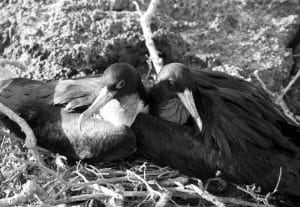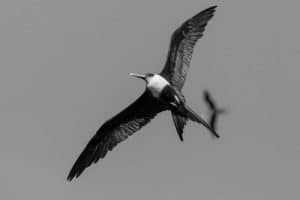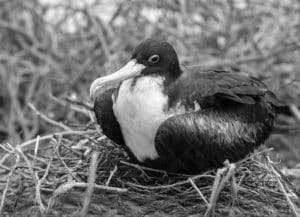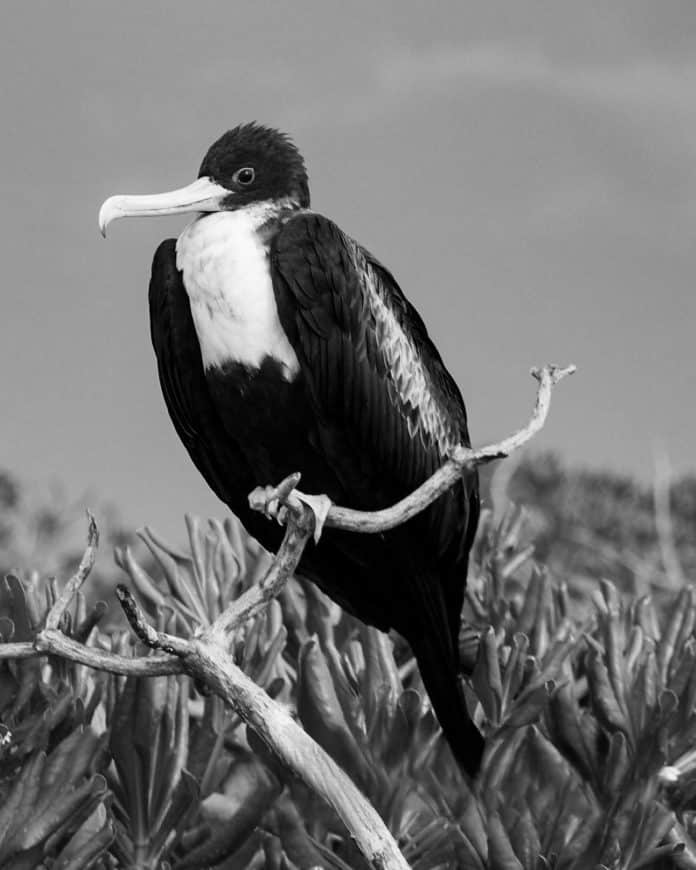Introduction to the Great Frigatebird
Welcome to the world of the great frigatebird in Tanzania! These magnificent creatures have long captured the imagination of bird enthusiasts and nature lovers with their majestic presence and graceful flight. The great frigatebird, scientifically known as Fregata minor, is a seabird renowned for its striking appearance and remarkable aerial acrobatics. Found in the coastal regions of Tanzania, these birds are a sight to behold as they soar through the skies with their distinctive silhouette and effortless elegance. In this article, we will delve into the world of the great frigatebird, exploring its habitat, behavior, conservation status, and the unique role it plays in Tanzanian culture and ecology.
Habitat and Distribution of the Great Frigatebird in Tanzania

The great frigatebird is known for its widespread distribution across the tropical and subtropical regions of the world, including the coastal areas of Tanzania. These birds are commonly found in the vicinity of the Indian Ocean, where they inhabit the islands, cays, and coastal cliffs, making them a prominent feature of Tanzania’s coastal ecosystems. With their preference for warm and humid climates, the great frigatebirds often nest in large colonies on remote islands, where they can take advantage of the abundant marine resources available in the surrounding waters. Their ability to cover vast distances in search of food and suitable nesting sites underscores their adaptability to diverse marine environments, making them a vital component of Tanzania’s coastal biodiversity.
The coastal regions of Tanzania, including the islands of Zanzibar and Pemba, provide an ideal habitat for the great frigatebird, offering a rich and varied marine ecosystem that supports their feeding and breeding activities. The pristine beaches, coral reefs, and mangrove forests along the Tanzanian coastline create a perfect setting for these magnificent birds to thrive and carry out their essential ecological roles. As we explore the physical characteristics and behavior of the great frigatebird, we will gain a deeper understanding of their unique adaptations and remarkable lifestyle in the context of Tanzania’s coastal environment.
Physical Characteristics and Behavior of the Great Frigatebird
The great frigatebird is renowned for its distinctive appearance, characterized by its deeply forked tail, long, slender wings, and striking black plumage. The male of the species is adorned with a prominent red throat pouch that inflates during the breeding season, creating a striking visual display to attract potential mates. In contrast, the female great frigatebird exhibits a white breast and a slightly smaller body size, but shares the same remarkable aerial prowess as the males. Their impressive wingspan and agile flight capabilities allow them to soar effortlessly across the coastal skies, utilizing thermal air currents to cover vast distances in search of food and nesting sites.
One of the most intriguing aspects of the great frigatebird’s behavior is its unique feeding strategy, which often involves aerial kleptoparasitism, a behavior where they harass other seabirds to steal their catch. This remarkable technique showcases the great frigatebird’s agility and opportunistic nature, as they skillfully intercept the prey captured by other birds in flight. Additionally, their ability to remain airborne for extended periods without landing further exemplifies their remarkable adaptations to a life spent predominantly at sea. As we delve into the conservation status and efforts to protect the great frigatebird in Tanzania, we will recognize the importance of preserving their unique ecological niche and ensuring their survival for future generations to appreciate.
Conservation Status and Efforts to Protect the Great Frigatebird in Tanzania
Despite their widespread distribution, the great frigatebird faces various threats that have raised concerns about their long-term survival in Tanzania. Habitat destruction, disturbance at nesting sites, and entanglement in fishing gear pose significant challenges to the conservation of these magnificent birds. Additionally, the impact of climate change on their marine habitats and food sources further exacerbates the vulnerability of the great frigatebird, highlighting the urgent need for conservation efforts to secure their future in Tanzania’s coastal ecosystems.
To address these challenges, conservation organizations and local authorities in Tanzania have implemented measures to protect the nesting sites and foraging areas of the great frigatebird. This includes the establishment of marine protected areas, monitoring of breeding colonies, and raising awareness about the importance of preserving the coastal habitats essential for the survival of these iconic seabirds. By engaging in collaborative efforts with local communities and stakeholders, conservation initiatives aim to mitigate the threats facing the great frigatebird and ensure the sustainability of their marine environment.
As we explore the best places for birdwatching the great frigatebird in Tanzania, we will discover the breathtaking landscapes and diverse avian life that make these coastal regions a haven for bird enthusiasts and nature photographers. The unique behaviors and mating rituals of the great frigatebird offer a fascinating insight into their social dynamics and reproductive strategies, adding to the allure of observing these magnificent birds in their natural habitat. Join us as we embark on a captivating journey to witness the grace and grandeur of the great frigatebird in Tanzania, and gain a deeper appreciation for their significance in the country’s rich natural heritage.
Best Places for Birdwatching the Great Frigatebird in Tanzania

Tanzania’s coastal regions offer an array of exceptional locations for birdwatching, providing enthusiasts with unparalleled opportunities to observe the great frigatebird in its natural environment. The pristine beaches, rocky cliffs, and secluded islands along the Tanzanian coastline serve as prime vantage points for witnessing the aerial displays and nesting activities of these magnificent seabirds. Zanzibar, with its idyllic beaches and vibrant marine life, is a popular destination for birdwatchers seeking to encounter the great frigatebird in its coastal habitat.
Pemba Island, located just north of Zanzibar, is another renowned hotspot for birdwatching, offering a tranquil setting where visitors can marvel at the sight of great frigatebirds soaring above the azure waters and nesting in the island’s secluded coves. The remote and untouched nature of Pemba Island provides a unique opportunity to observe these magnificent birds in a pristine and unspoiled environment, creating an unforgettable experience for those who appreciate the wonders of avian diversity.
In addition to the islands, the coastal areas of mainland Tanzania, including the Rufiji Delta and the mangrove forests of the Kilwa District, provide exceptional birdwatching opportunities, with the great frigatebird being a prominent feature of the diverse avian community that inhabits these coastal ecosystems. As we uncover the significance of the great frigatebird in Tanzanian culture and ecology, we will gain a deeper understanding of the vital role they play in the coastal landscapes and the need to protect their habitats for future generations to cherish.
Unique Behaviors and Mating Rituals of the Great Frigatebird
The great frigatebird’s breeding colonies are a spectacle to behold, as these charismatic birds engage in elaborate courtship displays and intricate mating rituals to attract their partners and secure their breeding territories. During the breeding season, male frigatebirds inflate their vibrant red throat pouches, creating a striking visual display as they perform intricate aerial maneuvers to capture the attention of the females. This captivating spectacle showcases the unique behaviors and remarkable adaptations of the great frigatebird, underscoring their significance in Tanzania’s coastal ecosystems and cultural heritage.
In addition to their captivating courtship displays, the great frigatebirds exhibit remarkable parenting behaviors, with both parents taking an active role in rearing their young. Nesting in large colonies, these seabirds build their nests in the coastal vegetation or on the rocky cliffs, creating a bustling community of breeding pairs that contribute to the vibrant avian life of Tanzania’s coastal regions. The sight of these majestic birds tending to their chicks and engaging in coordinated flights around the nesting sites provides a glimpse into the intricate social dynamics and reproductive strategies of the great frigatebird, highlighting their integral role in maintaining the ecological balance of the coastal habitats.
As we uncover the challenges and threats faced by the great frigatebird in Tanzania, we will recognize the importance of preserving their nesting sites and foraging areas to ensure the continued success of their breeding colonies and the sustainability of their marine environment. Join us as we delve into the significance of the great frigatebird in Tanzanian culture and ecology, and explore the timeless connection between these magnificent seabirds and the coastal landscapes they call home.
Challenges and Threats Faced by the Great Frigatebird in Tanzania
The great frigatebird faces a myriad of challenges that jeopardize its continued existence in Tanzania’s coastal ecosystems. Habitat destruction, resulting from coastal development and human encroachment, poses a significant threat to their nesting sites and foraging areas, leading to the decline of suitable habitats for these iconic seabirds. Furthermore, the impact of climate change on marine ecosystems, including altered oceanic currents and fluctuations in fish populations, has profound implications for the feeding and breeding success of the great frigatebird, amplifying the challenges they encounter in their coastal environment.
In addition to habitat loss, the great frigatebird is vulnerable to entanglement in fishing gear, which poses a direct threat to their survival, particularly in areas where commercial fishing activities intersect with their foraging grounds. Disturbance at nesting sites, whether caused by human activities or natural predators, further compounds the challenges faced by these birds, highlighting the need for comprehensive conservation strategies to safeguard their breeding colonies and ensure the long-term viability of their populations in Tanzania.
As we delve into the tips for observing and photographing the great frigatebird in Tanzania, we will uncover the best practices for minimizing human impact and respecting the natural behaviors of these magnificent seabirds, fostering a harmonious coexistence between birdwatchers and the avian inhabitants of Tanzania’s coastal landscapes. Join us as we embark on a journey to appreciate the grace and grandeur of the great frigatebird, and discover the essential role they play in the cultural tapestry and ecological balance of Tanzania’s coastal ecosystems.
The Significance of the Great Frigatebird in Tanzanian Culture and Ecology

The great frigatebird holds a special place in Tanzanian culture and folklore, serving as a symbol of freedom, grace, and resilience in the face of adversity. With its majestic presence and unparalleled aerial prowess, the great frigatebird has inspired admiration and reverence among the local communities, who have woven its imagery into their cultural traditions and artistic expressions. From ancient legends to contemporary art forms, the great frigatebird embodies the spirit of the coastal landscapes and the timeless connection between humans and nature in Tanzania.
In the ecological context, the great frigatebird plays a crucial role in maintaining the balance of Tanzania’s coastal ecosystems, contributing to the regulation of marine food chains and the dispersal of nutrients across the coastal landscapes. As apex predators in the marine environment, these seabirds help control the populations of fish and other marine organisms, exerting a profound influence on the dynamics of the coastal food webs and the health of the surrounding ecosystems. By conserving the habitats and resources essential for the great frigatebird’s survival, we not only protect these magnificent birds but also safeguard the intricate web of life that sustains Tanzania’s coastal biodiversity.
As we conclude our exploration of the great frigatebird in Tanzania, we are reminded of the imperative to take action in preserving their natural habitats and supporting conservation initiatives that aim to ensure the long-term sustainability of their populations. By embracing the tips for observing and photographing the great frigatebird in Tanzania, we can foster a deeper appreciation for these iconic seabirds and contribute to their conservation through responsible and respectful engagement with their natural environment.
Tips for Observing and Photographing the Great Frigatebird in Tanzania
When observing and photographing the great frigatebird in Tanzania, it is essential to prioritize the well-being of these magnificent birds and minimize any potential disturbances to their natural behaviors. Respect the designated boundaries and regulations in protected areas and nesting sites, and maintain a safe distance to avoid causing undue stress to the birds or disrupting their breeding activities. By approaching with caution and employing ethical photography practices, you can capture stunning images of the great frigatebird while ensuring that your presence does not impact their welfare or the integrity of their habitat.
Choose vantage points that offer unobstructed views of the coastal landscapes and nesting colonies, allowing you to observe the great frigatebird’s aerial displays and social interactions without encroaching on their nesting sites. Patience and attentiveness are key when photographing these birds, as their graceful flight patterns and captivating behaviors unfold amidst the backdrop of Tanzania’s stunning coastal scenery. By immersing yourself in the natural rhythms of their environment, you can capture the essence of the great frigatebird’s grace and grandeur in a way that honors their role in the cultural and ecological tapestry of Tanzania.
As we reflect on the captivating journey of exploring the great frigatebird in Tanzania, we are called to action in supporting conservation efforts and advocating for the protection of their coastal habitats. By raising awareness about the significance of these magnificent seabirds and the challenges they face, we can inspire collective action to preserve their natural heritage and ensure a sustainable future for the great frigatebird in Tanzania and beyond.
Conclusion
In conclusion, the great frigatebird embodies the grace and grandeur of Tanzania’s coastal landscapes, captivating our hearts and minds with its remarkable presence and vital ecological role. As we journey through the habitat, behavior, and cultural significance of the great frigatebird, we gain a profound appreciation for the interconnectedness of these magnificent seabirds with the coastal ecosystems and the rich tapestry of Tanzanian culture. By recognizing the challenges and threats they face, we are compelled to take action in safeguarding their habitats and supporting conservation initiatives that aim to secure their future in the coastal realms they call home.


































